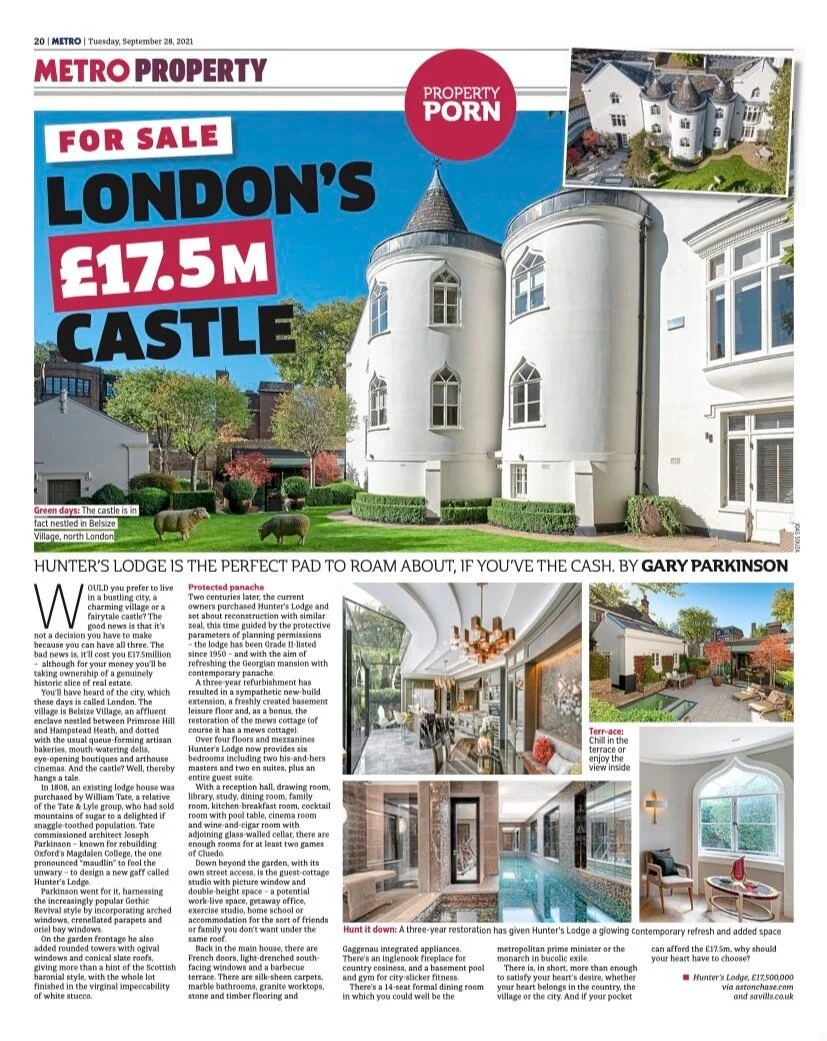The townhouse with the Premier League pricetag
In Chelsea it’s not just footballers that cost tens of millions, says Gary Parkinson
For most of us, shopping consists of searching for bargains – but sometimes, the heavier the pricetag, the sexier the proposition.
The latest des-res for those who would click the dropdown menu to “Filter by highest price first” – assuming they don’t have their personal shopper on duty that day – is Stuart House, described as “one of the last trophy mansions in Knightsbridge”.
Indeed, METRO is assured that the property is currently the priciest single home for sale in the Royal Borough of Kensington and Chelsea, which hardly languishes in the lower leagues of lavishness.
Its literally extraordinary pricetag of £35million is partly due to its size. It’s a six-floor, 11,351-sq ft behemoth, the sort which have almost all been sliced and diced over the decades into lesser but lucrative smaller properties.
Nor could its location be much swankier. Tucked behind Sloane Street and a gemstone’s throw from Harrods, Cadogan Square is one of London’s most expensive addresses, a redbrick enclave around a garden reserved for private residents who have included horror stars Christopher Lee and Boris Karloff, in case that pricetag hasn’t scared you off.
It’s also, quite frankly, a looker. Beaming benignly down on the corner of Cadogan Square, the Queen Anne-style house looks more like a school or some other benevolent Victorian institution in which a young Dickens hero would learn valuable life lessons from a kindly master.
Enviable environs
The house was first owned in 1884 by Oscar Leslie Stephen, a director of the Great Northern Railway. Stephen was typical of the influx into the plush new housing around the square, built on the estate of the Cadogan family, whose motto is qui invidet minor est, or "He who envies is the inferior".
There’s much to envy about Stuart House, perhaps the development’s finest property and, as we have seen, easily its most expensive. The redbrick frontage is built around a central projecting portion with Dutch gable, while ornamental pilasters on the main upper floors lead the eye to the hipped roof with its arcaded brick chimneys.
Also on the outside, and reflecting the monarchical name, are terracotta sculptural reliefs depicting King James VI of Scotland – later also King James I of England – and ‘Mary’ (presumably his mother, Mary Queen of Scots). In case you’re wondering, a descendant of the Stuart dynasty married a Cadogan who, despite being merely aristocratic, had presumably never envied royalty.
The building was Grade II-listed in 1969, so the current owners – who bought Stuart House as a family property in 1999 and are now downsizing empty-nesters – have been faithful and tasteful in their upkeep and improvements, retaining original period features like ornate moulding, huge stone fireplaces and grand staircases.
With seven reception rooms, a study, a family den and five bedrooms (excluding the below-stairs staff accommodation you’ll be needing), there’s plenty of space for a family to rattle round – including a teenage hideout at the top of the house, under that Dutch gable. Meanwhile, the exquisite 10.17m x 6.13m master bedroom, with dressing room and bathroom, opens through double doors onto a west-facing roof terrace.
When the dinner bell rings – with food produced from a kitchen big enough to cater for a banquet – the folks can gather in the stately dining room, perhaps working off the calories later in the lower-ground wellness retreat, including gym and elongated swimming pool. After all, one needs to keep in shape to pick up those heavy pricetags...
Originally published by Metro, 5 Oct 2021





